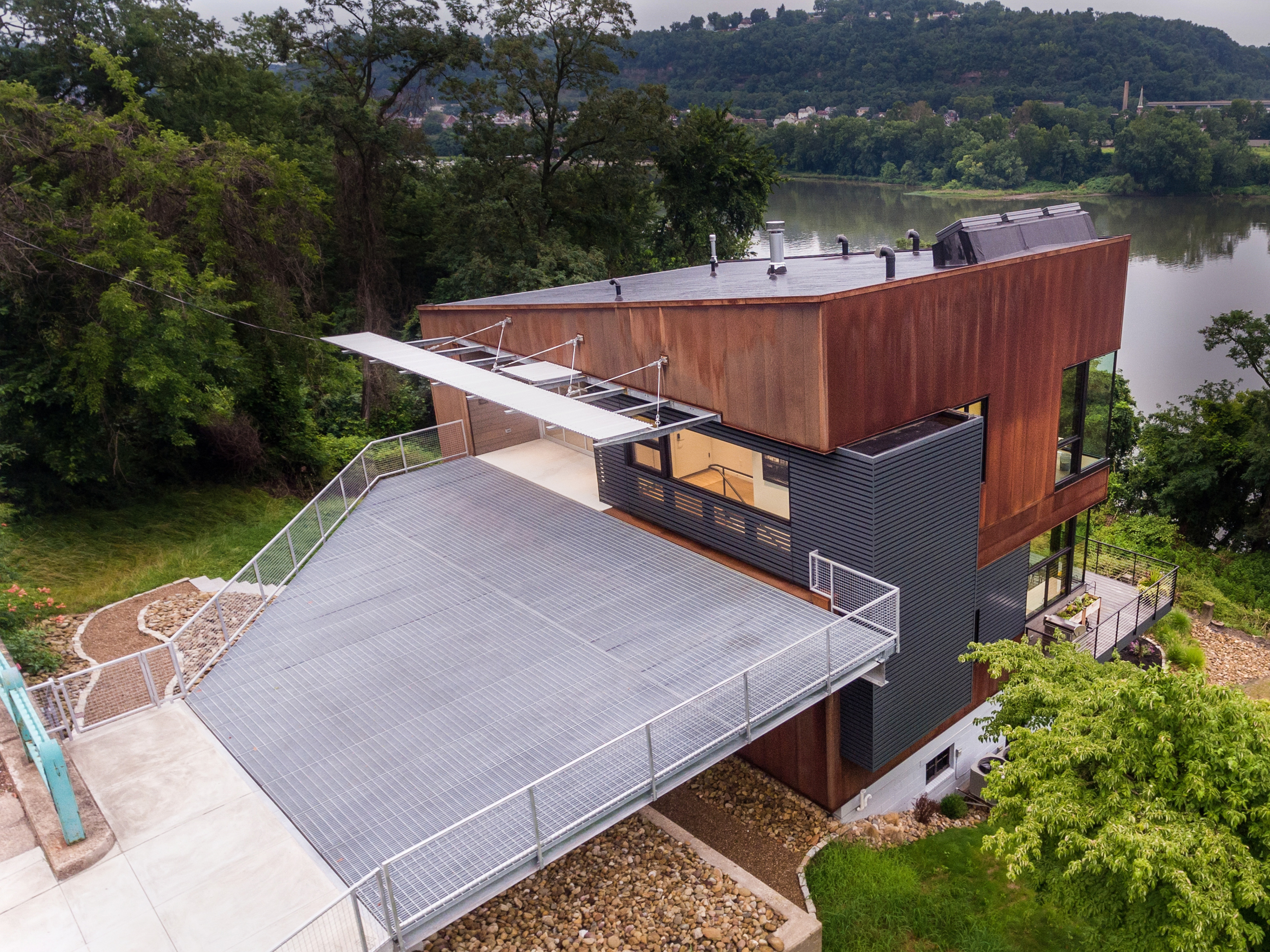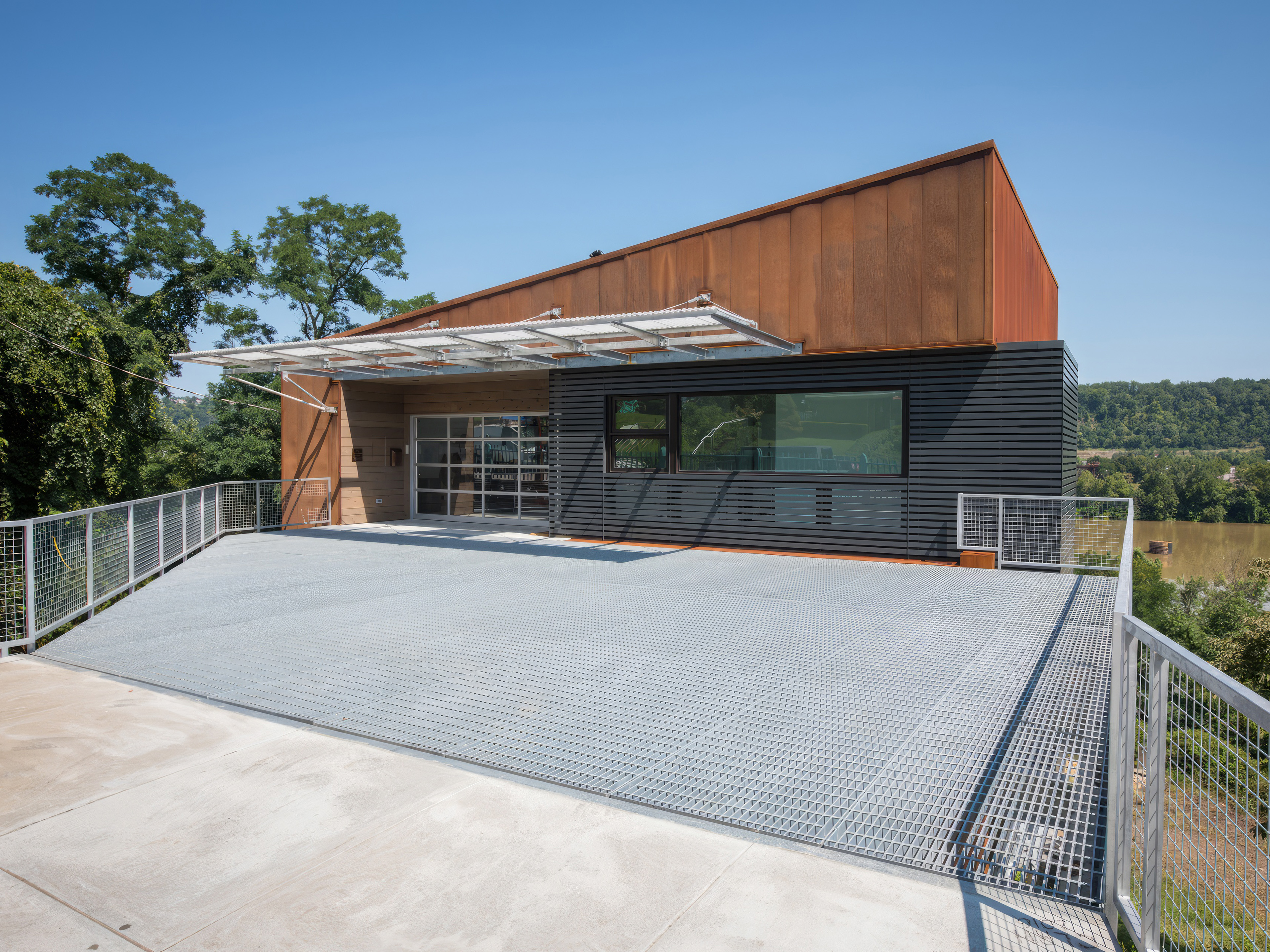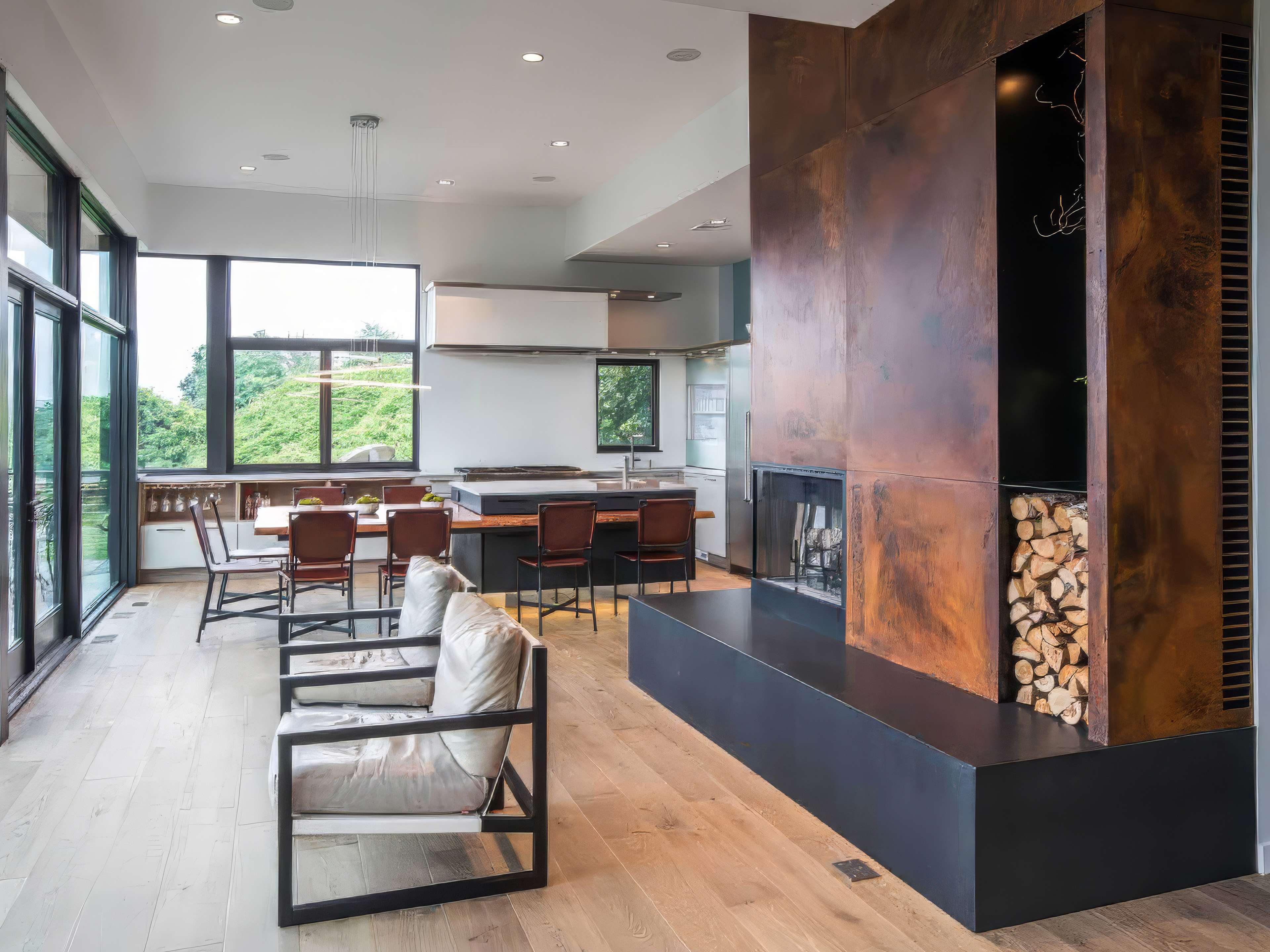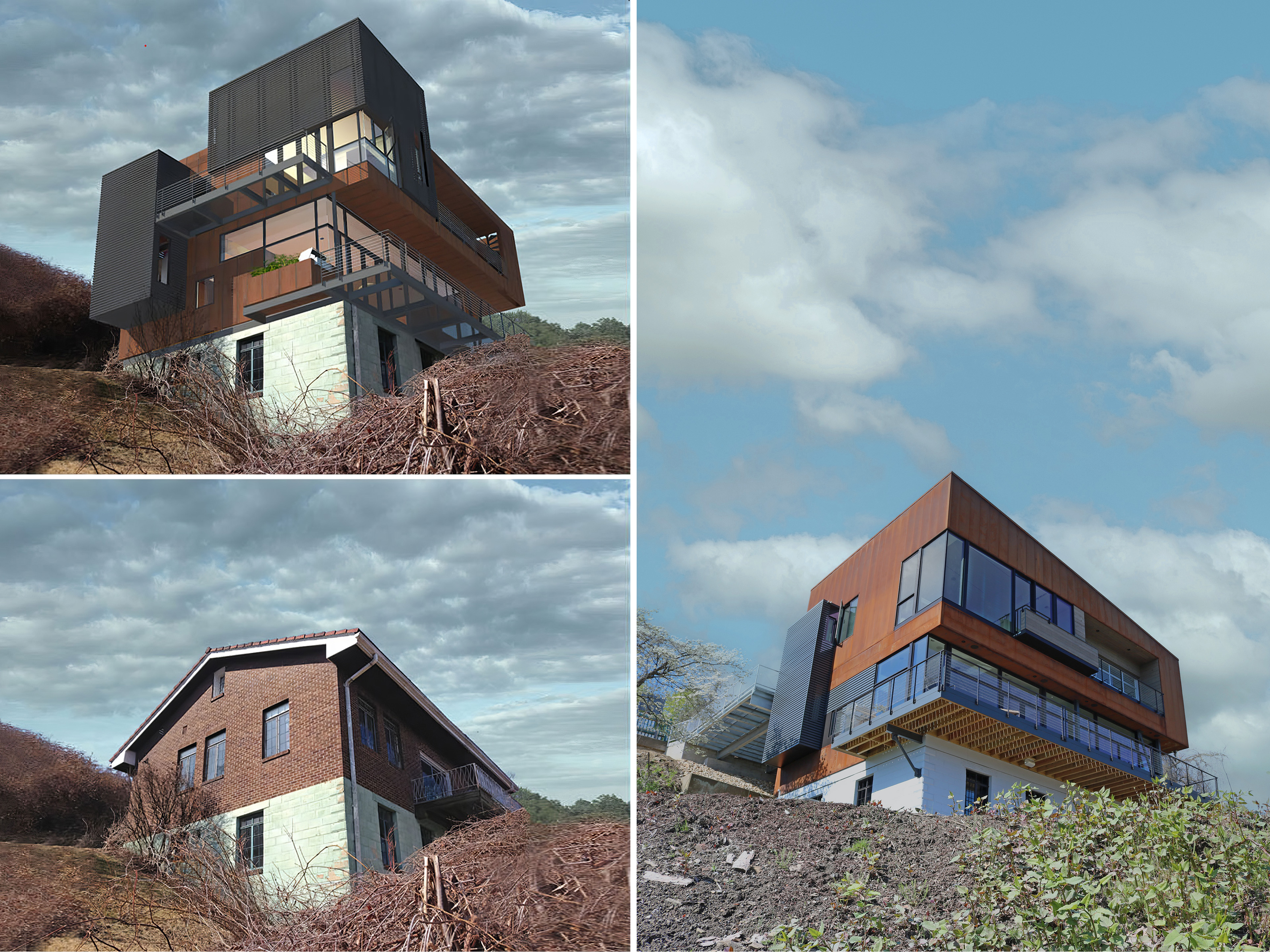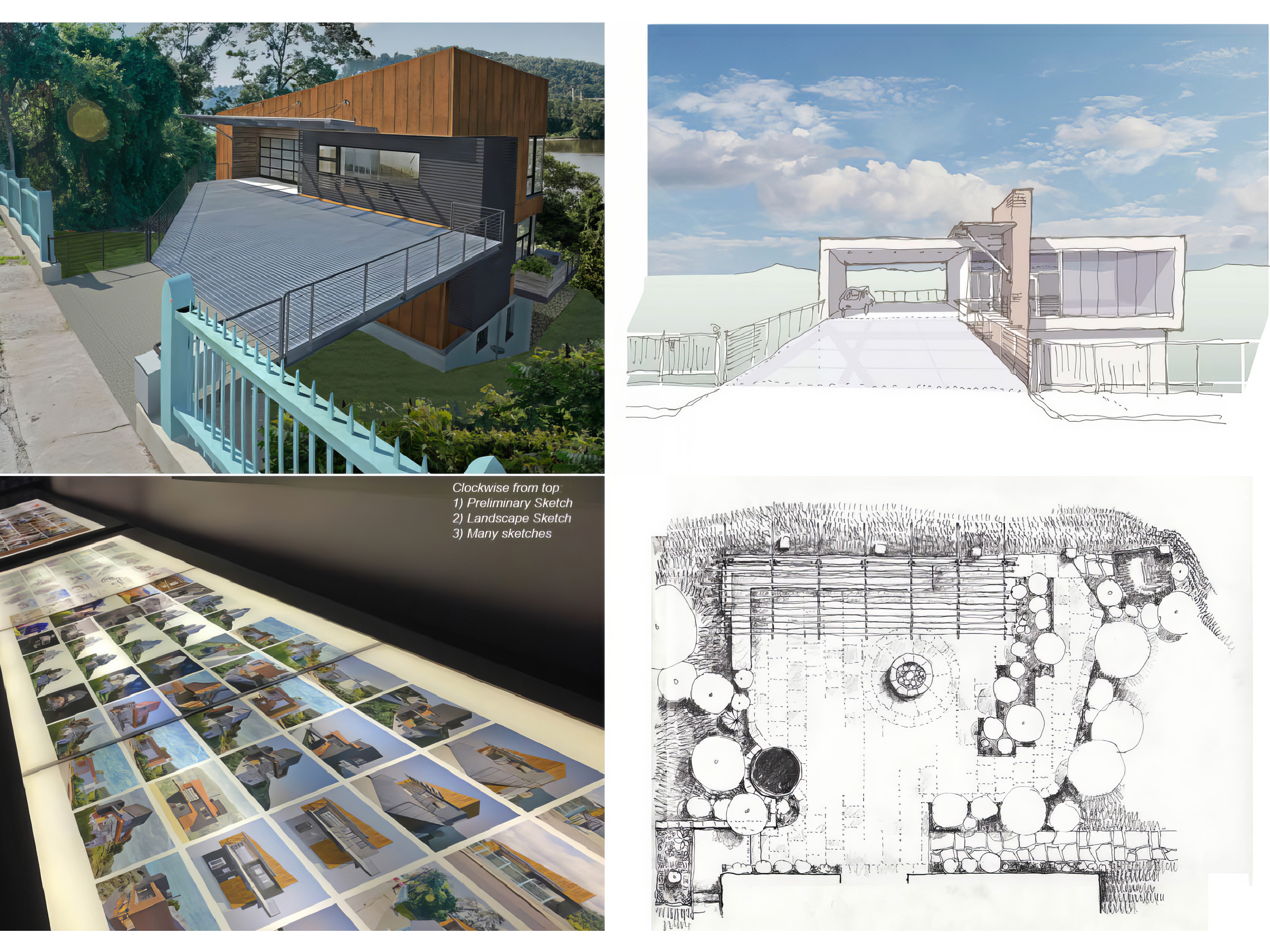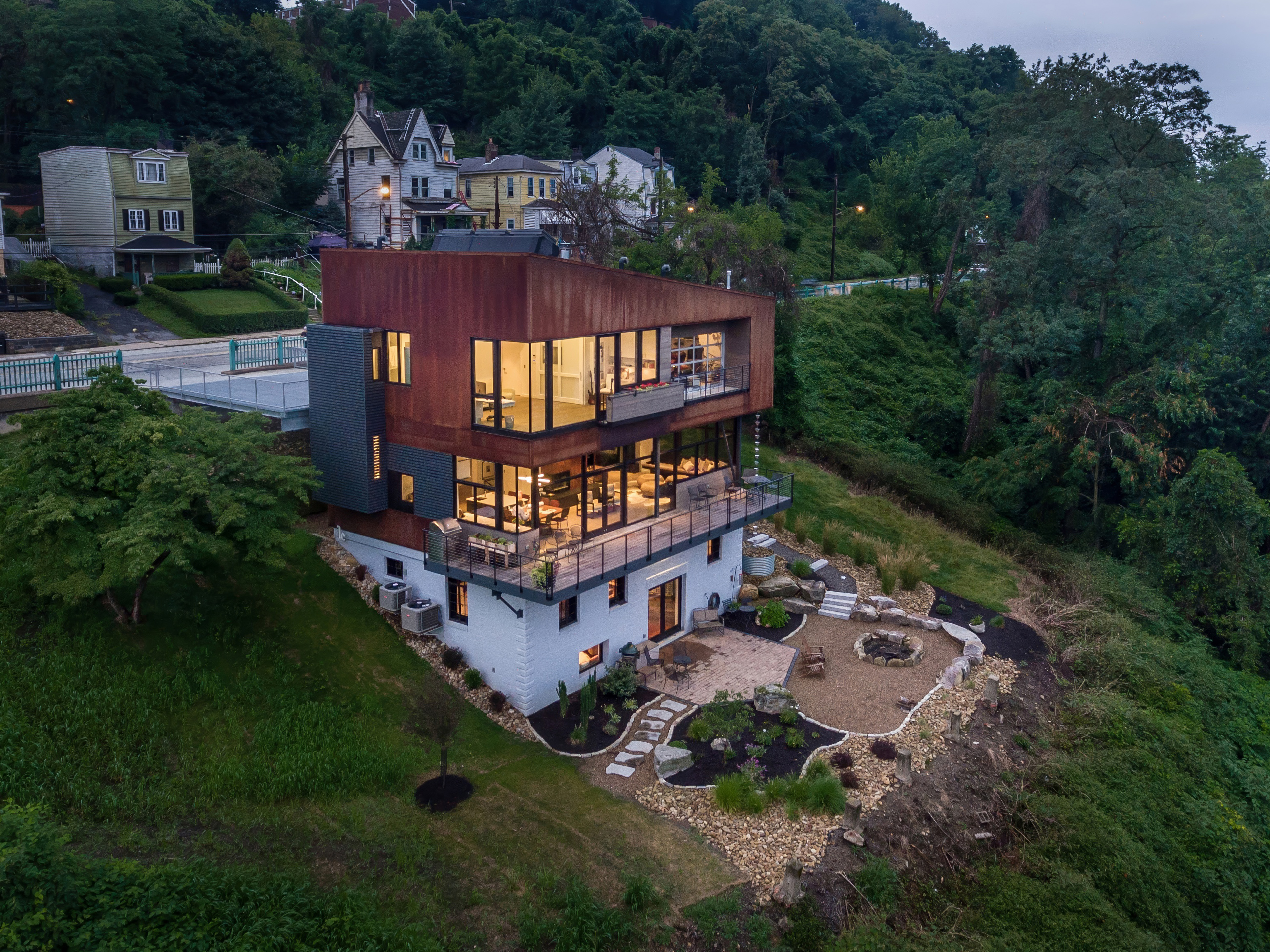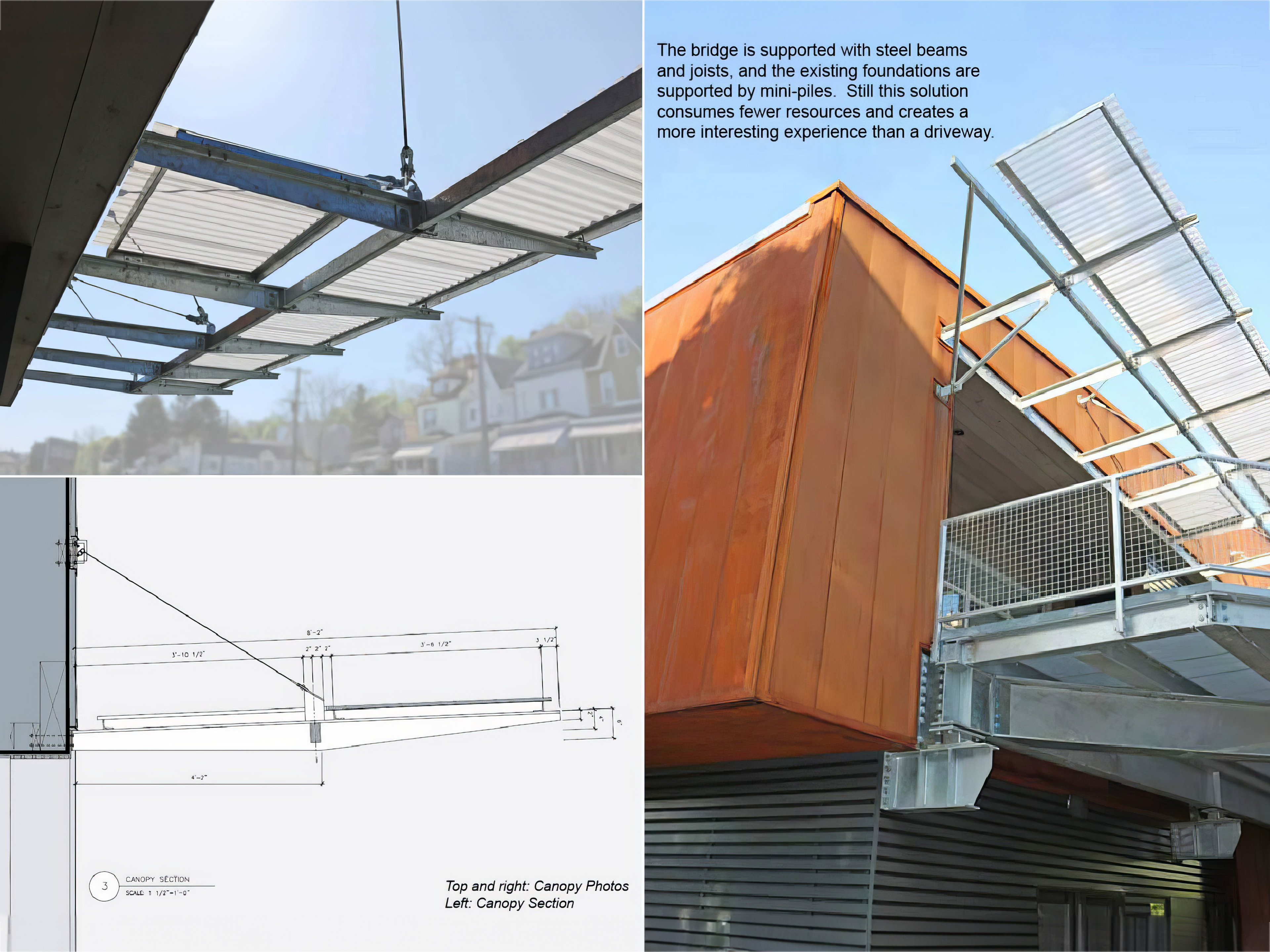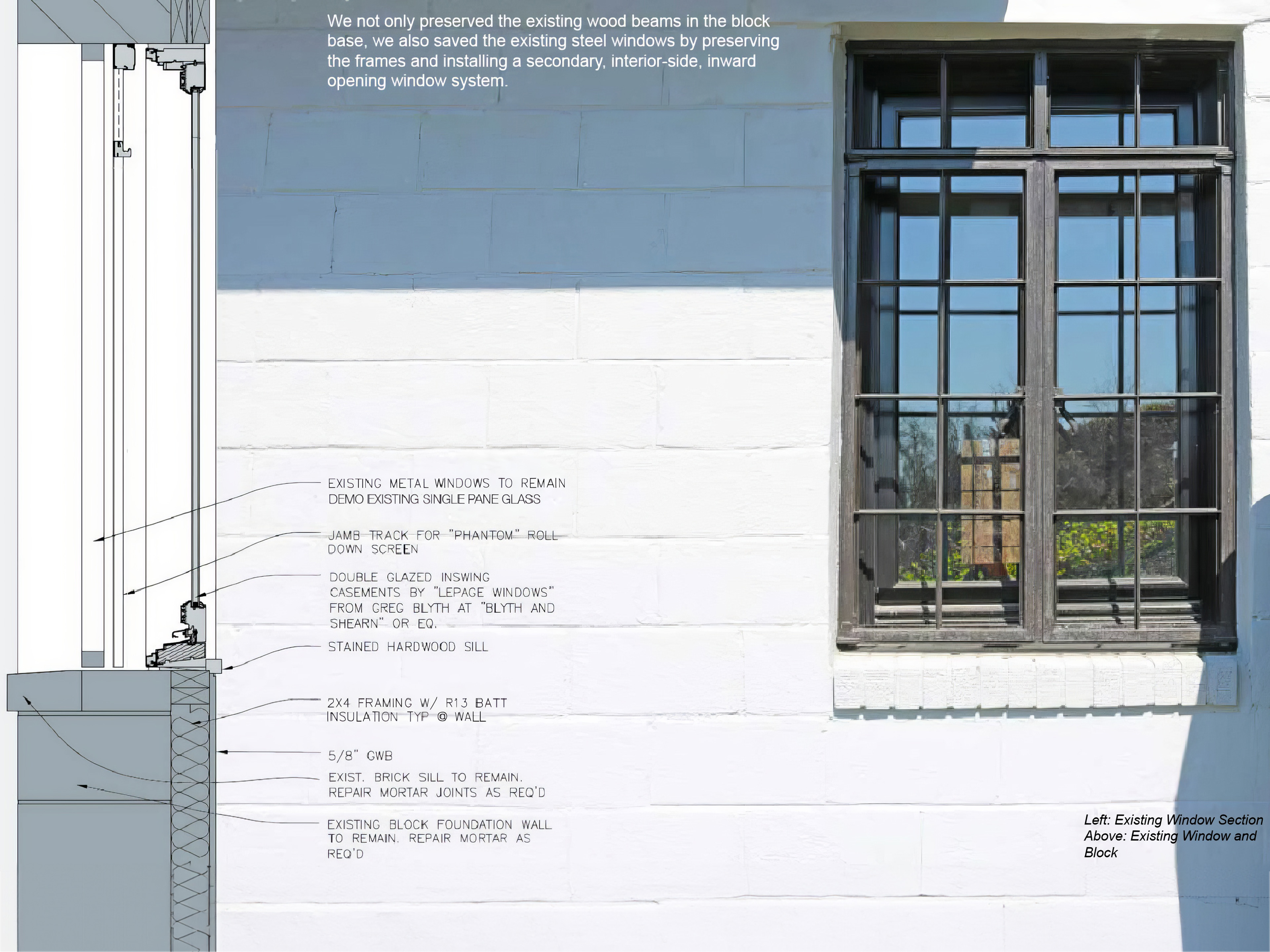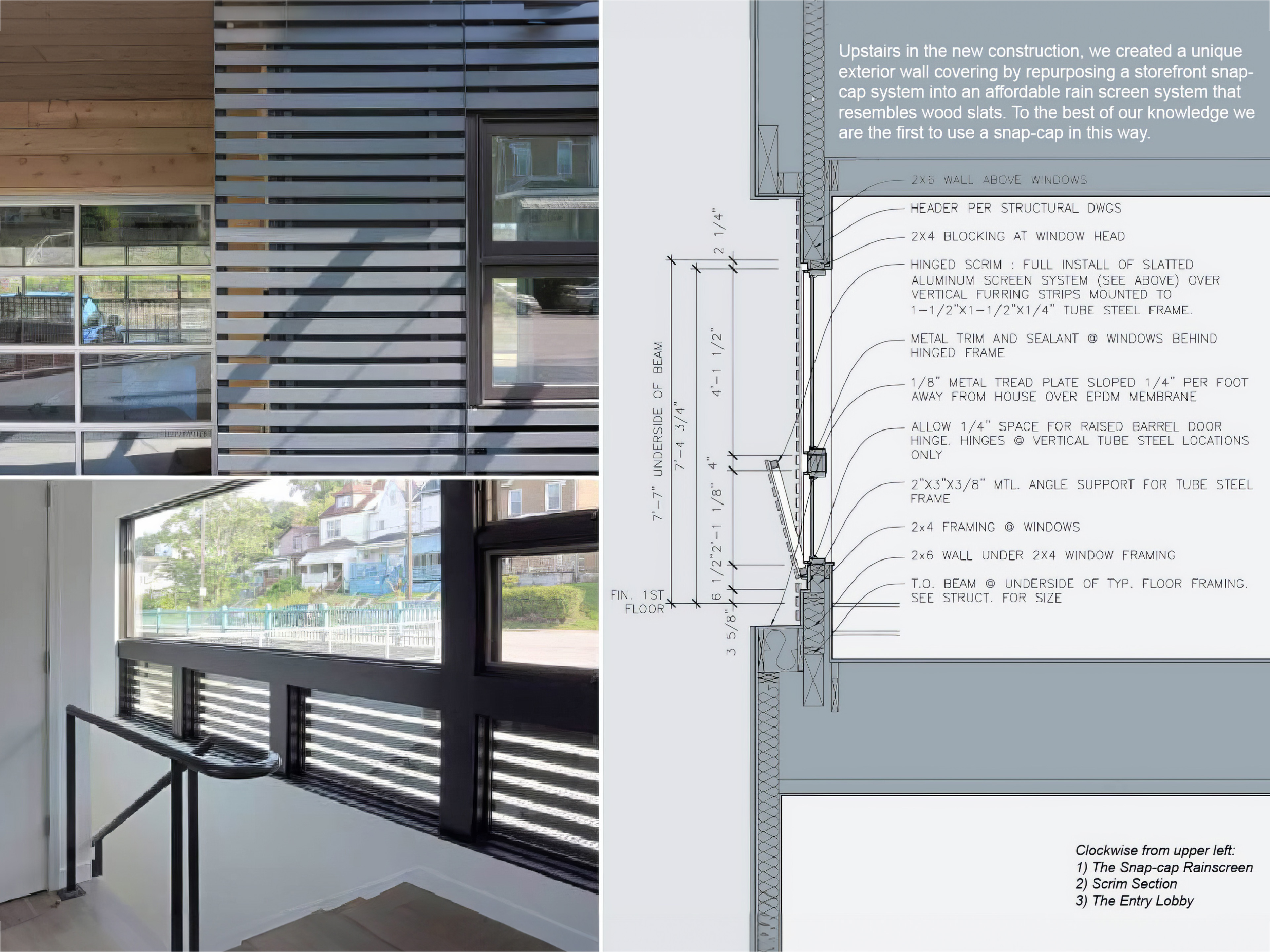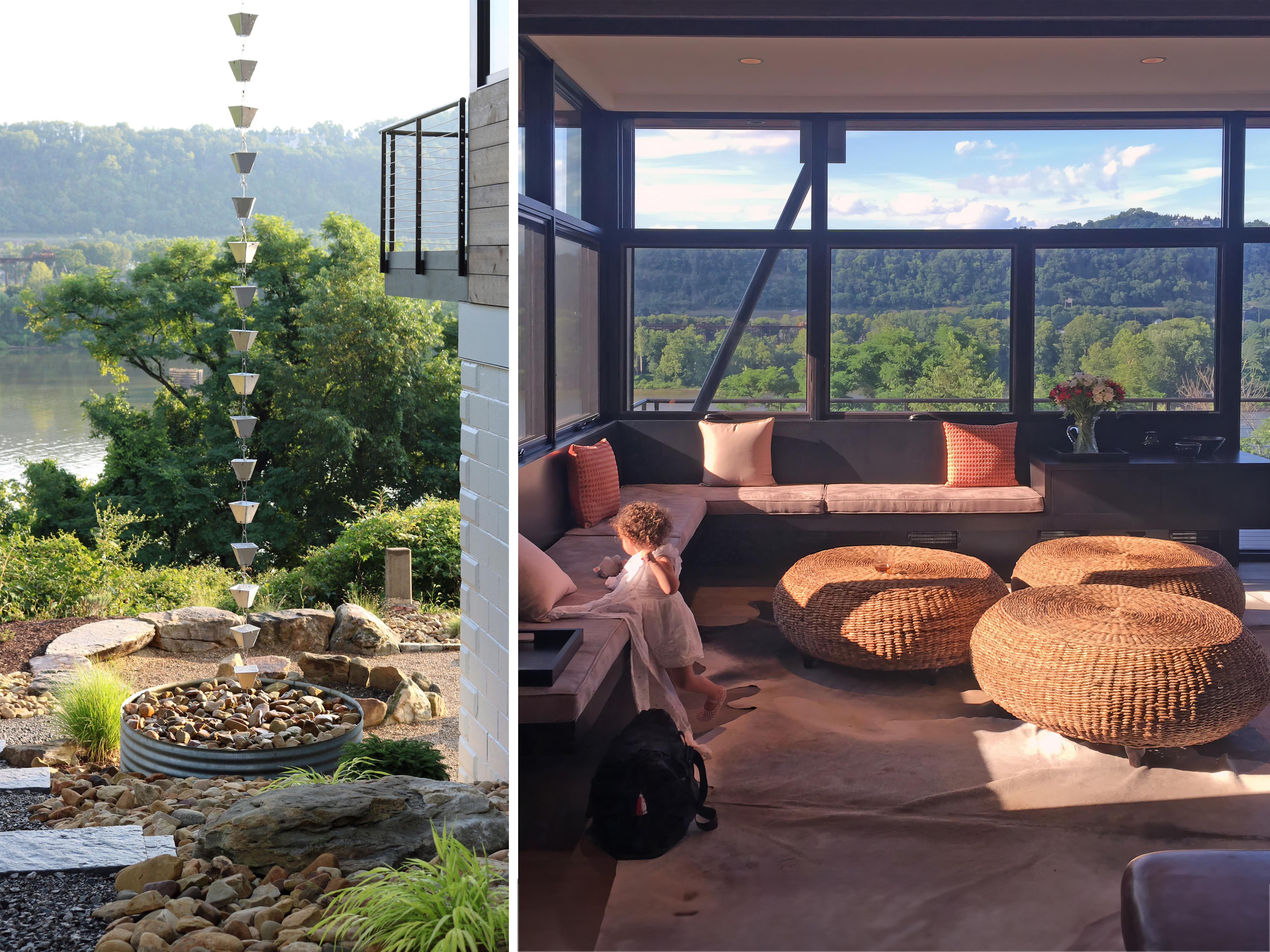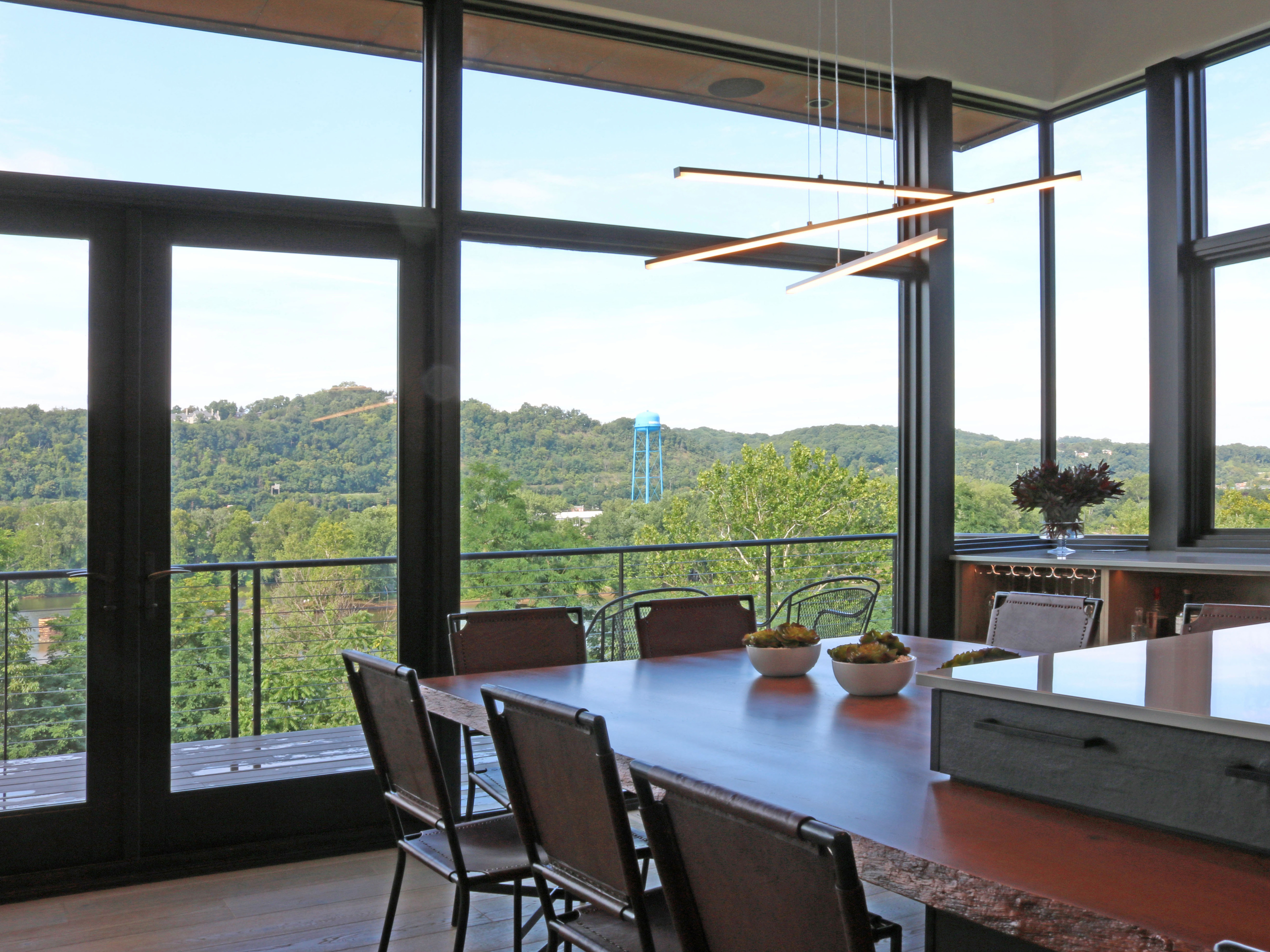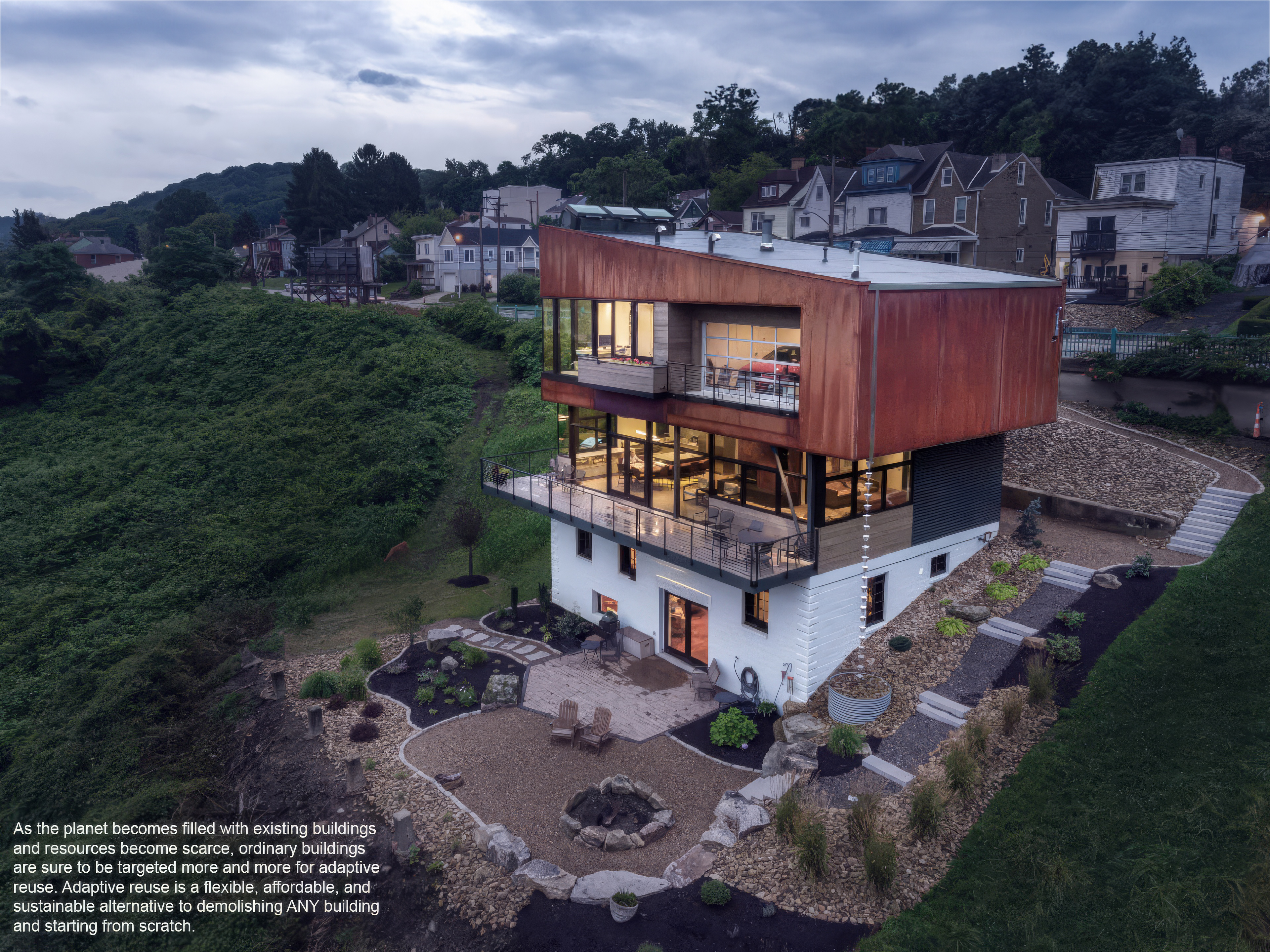The River House
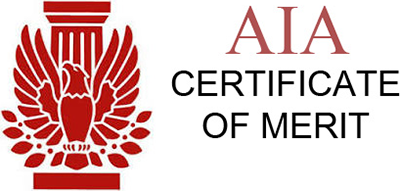
Reuse of Ordinary Buildings: The River House demonstrates that ALL existing buildings, even those not designed by architects, deserve to be studied carefully and treated with the same respect as their larger more elaborate peers. Here is a link to a Fisher ARCHitecture lecture on the topic at the AIA National Convention.
All around Pittsburgh, new build-from-scratch apartments and condominiums of dubious quality are replacing sound structures that have connected us to our city’s history. In the past, developers only saved “special” buildings. As a result, Pittsburghers only recognize a small portion of their city’s storied past.
Due to their smaller size and detachment from the community, ordinary buildings can change in response to new needs in ways not possible with other strategies. When an architect adapts an ordinary building, they are free to focus more on function and experience than on style. Most importantly, our planet can not afford to tear down buildings once they are obsolete. Adaptive Reuse is a flexible, affordable, and sustainable alternative to demolishing ANY building and starting from scratch.
Project Description
The River House is an Adaptive Reuse home that we designed for an eye surgeon and a teacher. The couple married while contractor, John Cummings, was constructing the project. They needed a place where they could live and where their seven children, the youngest of whom enters college this year, could stay from time to time.
Read More >The property is located along a busy blue-collar Pittsburgh street that runs along the Allegheny River. An existing ground floor distillery built in the 1920’s marked the site. Later, an owner added a one story living space above. The substantial concrete block base, which featured thick walls and steel windows, was in good shape. However, the wood structure above was falling to pieces. The site stretches between the street and a railroad line far below, and was so steep that our contractor priced the cost of a new driveway at a thousand dollars per linear foot!
Our intent was to create a set of memorable experiences by saving as much of the existing building as possible and responding to the site context. One of our first decisions was to precisely preserve the masonry ground floor. Then, we demolished the insubstantial addition above and then added a new gallery and garage, paying particular attention to the points of contact where new and old construction met.
Next, we designed a metal grating clad bridge. This would allow the owners to park on the project’s new floor, which is level with the street. We made every effort to open the new construction as much as possible to the river view. Lastly, we marked the building entry with a corrugated fiberglass canopy and clad the new building volumes in Cor10 steel, providing a colorful, tough, industrial look that relates to Pittsburgh’s storied past.
The new construction, with its emphasis on place, craft, and community, is functional and buildable, yet uniquely local to Pittsburgh.

